
We kindly inform you that, as long as the subject affiliation of our 300.000+ articles is in progress, you might get unsufficient or no results on your third level or second level search. In this case, please broaden your search criteria.


The article presents results from field research conducted at Czech Televison. The focus of the research was on pronunciation of loanwords and foreign proper names, particularly on words of Germanic origin (German, English, etc.). The research method consisted of semi-structured interviews with respondents (employees of Czech Television). The pronunciation of loanwords in the data was classified along with eight principles of phonological adaptation of loanwords and foreign proper names. The results suggest that respondents most frequently employed the principle of phonological approximation, which means that they pronounced proper foreign names based on the pronunciation in the language of origin, but they draw on the repertoire of target language consonants and vowels. Another significant principle of pronunciation was orthographic pronunciation based primarily on the written form of the word. In some cases respondents turned to the principle of analogy with the donor language, in this case, the adapted form resulted from phonetic analogies with the source language.
More...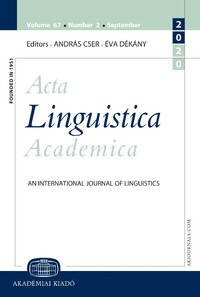
Following Trager & Bloch (1941), I argue that diphthongs in English are short vowels followed by a glide, that is, a consonant (Szigetvári 2016). In the present paper, I bring further evidence for this claim, based on the distribution of unstressed vowels in British English
More...
This paper investigates place of articulation shifts involving heterosyllabic C[non-coronal]C[coronal] clusters. Such phenomena are found, among other languages, in the diachrony of Italiot Greek, where three typologically different historical stages are observed: (a) no shifts; (b) dorsal > labial shift; (c) dorsal, labial > coronal shift. Drawing on Rice's (1994) model of the Place node and the markedness hierarchy dorsal ≺ labial ≺ coronal (with “≺” denoting ‘more marked than’) (de Lacy 2002), I maintain that these shifts reduce the markedness of codas. The gradual typological changes are accounted for in terms of Property Theory (Alber & Prince 2015).
More...
This paper reports on a two-part research project, conducted in order to see how Hungarian learners with at least vantage level of Spanish realize melodic peaks in their Spanish utterances. First, we are focusing on the tonal and distributional characteristics of melodic peaks, taking into consideration the proportion of the rise in f0 with respect to the previous syllable and examining if the affected syllable is lexically stressed. Second, the range of the tonal rise until the first peak of the utterance is analyzed. The method applied in both cases is Cantero Serena’s Prosodic Analysis of Speech (2019), which represents intonation by objectively comparable standardized melodic curves. The differences found in the speech of Hungarian learners as compared to native Spanish speakers have not proved to be significant in the aspects analyzed here. The main finding of the research is that native Spanish speakers tend to realize the first peak of their declarative sentences as the highest f0 point of the utterance, whereas this is less typical in the oral production of Hungarian learners of Spanish.
More...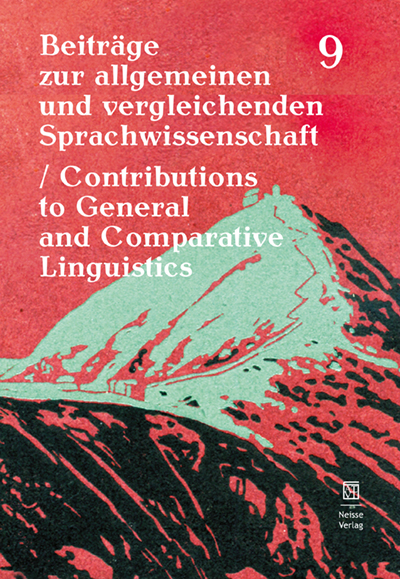
The paper reports findings of a pilot 3D/4D ultrasound study on the articulation of palatalized coronal obstruents in Ukrainian, Polish and Russian. The study quantitatively evaluates the degree of palatalization looking at the relative dorsum frontings/dorsum raising/ advancement of the tongue root as variables. Apart from the fronting and raising of the tongue dorsum, palatalized consonants show a systematic effect of the advancement of the tongue root. The preliminary results indicate that the effect of the position of the dorsum is bigger in phonemic palatalization than in allophonic palatalization, while the effect size of the tongue root remains similar across palatalization types.
More...
The aim of the article is an acoustic description of German vowel elongation during live sports commentary. It is not about long vowels that are in time relation to the other segments in the lexeme, but about those that, regardless of the quantity, have an additional duration (over 0.2 seconds) in a particular communication situation. The research material consists of two sports commentaries. The first concerns Germany's victory in the quarter-finals of the 2017 IIHF World Hockey Championship; the second - the gold medal won by Gesa Krause during the women's 3000 metres steeplechase at the 2018 European Athletics Championships.
More...
A parallel is drawn between the northernmost regions of England represented by Durham and Yorkshire and the transition zone Ouddeken (2016) identifies between voicing and aspiration languages in the Dutch-German dialect continuum. It is argued that, owing to historical changes and dialect contact, the Northern Englishes discussed exhibit hybrid laryngeal systems as a result of being geographically intermediate between Scots in Scotland, which is a voice language similar to Dutch, and mainstream varieties of English spoken more to the south in England (and in most of the rest of the English-speaking world), which are aspiration systems of the German type. We model the emergence of laryngeal systems as the setting of three parameters: (i) whether the laryngeally marked/specified obstruent series contains [voice] (L-system) or [asp] (H-system); (ii) whether the laryngeal prime is able to spread (right-to-left); and (iii) whether the system has pre-obstruent delaryngealisation (POD) (due to which in C1C2, C1 becomes unmarked/underspecified). While spreading L with POD derives voice languages and non-spreading H with no POD derives aspiration languages, two mixed combinations derive the intermediate categories of Durham and Yorkshire (spreading L & no POD and spreading H & no POD, respectively). We also show that all remaining combinations are attested cross-linguistically or else theoretically uninterpretable.
More...
The paper reports on an empirical study which aims at verifying a frequent claim concerning the restriction on the formation of feminine nouns posed by consonant clusters emerging on the attachment of the suffix -ka to masculine stems. We provide evidence that only one of the 20 nouns used in the experiment, i.e. adiunktka has proved to be difficult for the participants to pronounce by while the remaining items such as architektka and chirurżka were rather easy or easy to articulate.
More...
The article reports the most important phonetic changes which have taken place in thecontemporary Polish language. The aim of the sketch is to answer the questions that arisewhen learning phonetics and pronunciation, especially in regard to sounds: [ś], [ź], [ć], [ӡ] and ́[s ́], [z ́], [c ́], [ӡ’]. The author focuses on the phenomena associated with the withdrawal ofpalatalisation and presents the solutions adopted in academic textbooks. Finally, she presentsher own suggestions for the articulation of the abovementioned sounds at the meeting pointof morphemes.
More...
This article discusses the problems related to the sound realisation of the so-called nasal sounds,that is leƩ ers ą and ę, as well as the diff erences in the phonological interpretation of thoserealisations. The issue has been repeatedly raised by linguists (e.g. Zarembina 1963; Retz 1979ab;Dunaj 1991; Sawicka 1995; Nagórkti1998; Szpyra-Kozłowska 2002, and others), which proves itscomplexity and difficulty. The leƩ ers ą and ę can be pronounced in various ways depending ontheir neighbourhood (that is other leƩ ers that follow them), which causes problems in Polishlanguage didactics and in the process of teaching of the correct Polish language pronunciation(especially when it comes to teaching Polish pronunciation to foreigners). The article mentionsthe methods and principles of the realisation of nasal sounds as well as inconsistencies in thephonological characteristics of the phenomenon. The article is an overview, as its aim is tocompare different suggestions for the phonological interpretation.
More...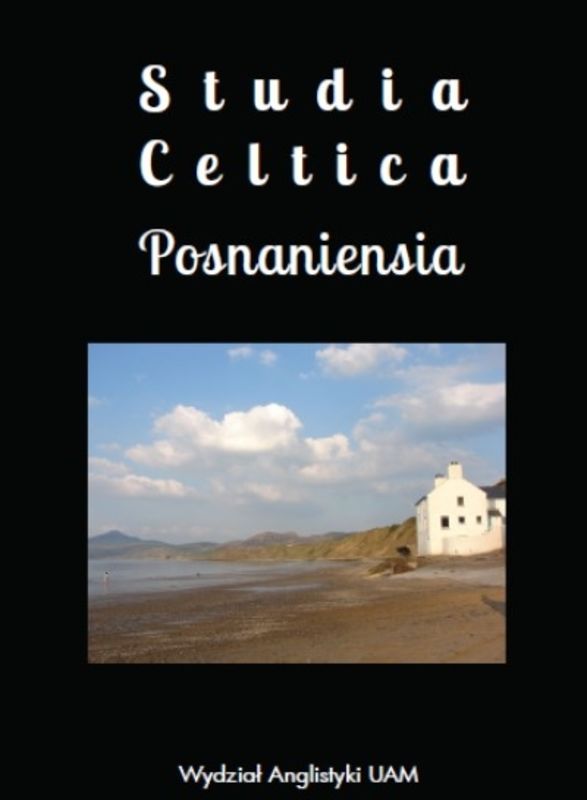
I discuss the nativeness of heritage speakers of Breton in the twentieth century. I present a syntactic test designed for Breton that sets apart its native speakers from its late learners, for whom Breton is a second language. Nativeness is revealed by a better tolerance to syntactic overload when sufficient linguistic stress is applied. Both heritage speakers of inherited Breton and early bilinguals whose linguistic input comes exclusively from school answer this test alike, which I take as a sign they are cognitively natives. The syntactic nativeness of children deprived of familial Breton input suggests there is many more young Breton natives among contemporary speakers than previously assumed. Taking stock of these results, I discuss the cultural erasure of Breton native speakers. I compare their cultural treatment with the figure of the ghost. I end by a discussion of the term new speaker.
More...
The intensively developing Polish-Korean contacts and direct access to the knowledge of South Korea as one of the major East Asian countries obtained from Internet and media coverage have resulted in Korean toponyms being assimilated in the Polish language to an increasing extent. However, they are adapted in a number of ways, being mediated through two main systems of Latinising the Korean language, i.e. the McCune-Reischauer transcription and the modified MOE transcription, which is officially propagated by Korean authorities. This leads to a certain competition between the two systems, which are, moreover, oen used in the situation of not only lack of command of the source language itself, but also ignorance of the conventional rules of the Latin transcription of Korean geographical names, which are different in both transcriptions. Moreover, toponyms must be assimilated based on various compromises between the phonological system of the source language and the system of the receiving language. Such a helpful compromise might be an additionally used Polonised transcription in the resource of leer symbols, but this requires substantial adjustments and additions as well as unavoidable concessions to make it easier for Polish recipients to decipher texts about Korea. From the perspective of historical standardisation of some characteristic Korean toponyms in Polish publications, various transcription tools, methods of their assimilation and adaptations, as well as the obvious cognitive barriers might become definitely more pronounced and informative for both text authors and recipients.
More...
The study investigates the dynamics of speech rhythm in early sequential bilingual children who have access to Italian-English immersion programs. The research focused on the Italian and English semi-spontaneous narrative productions of 9 students, aged between 6;7 and 10;11 and distributed across three different classes (Year 1, Year 3, Year 5). Their speech was recorded and subject to an interval-based analysis via computation of %V/ΔC, PVI and Varco metrics. The retrieved metrics underwent within-group and between-group one-way ANOVAs in order to identify valuable cross-linguistic variations among children of the same age and statistically significant differences between different age groups (Y1, Y3, Y5). The results appear to support a stress-centered interpretation of speech rhythm: according to this view, all languages could be arranged on a stress-timed continuum in which “syllable-timing” is marked by sparser occurrences of (regular) prominence due to the relative absence of vocalic elision and consonantal complexity. Indeed, the comparative analysis drawn between the normalized vocalic indexes of Y1, Y3 and Y5 students revealed a statistically relevant increase in vocalic variation phenomena both in Italian and in English. Moreover, Y1 and Y3 consonantal scores were comparatively higher in the Italian sample: it will be discussed how unpredictable stress-timed patterns can arise as a function of proficiency, speech-rate and age-related disfluencies.
More...
The major aim of this paper is to establish possible correlations between continuous sentiment scores and four basic acoustic characteristics of voice. In order to achieve this objective, the text of “A Christmas Carol” by Charles Dickens was tokenized at the sentence level. Next, each of the resulting text units was assessed in terms of sentiment polarity and aligned with the corresponding fragment in an audiobook. The results indicate weak but statistically significant correlations between sentiment scores and three acoustic features: the mean F0, the standard deviation of F0 and the mean intensity. These findings may be useful in selecting optimal acoustic features for model training in multimodal sentiment analysis. Also, they are essential from a linguistic point of view and could be applied in studies on such language phenomena as irony.
More...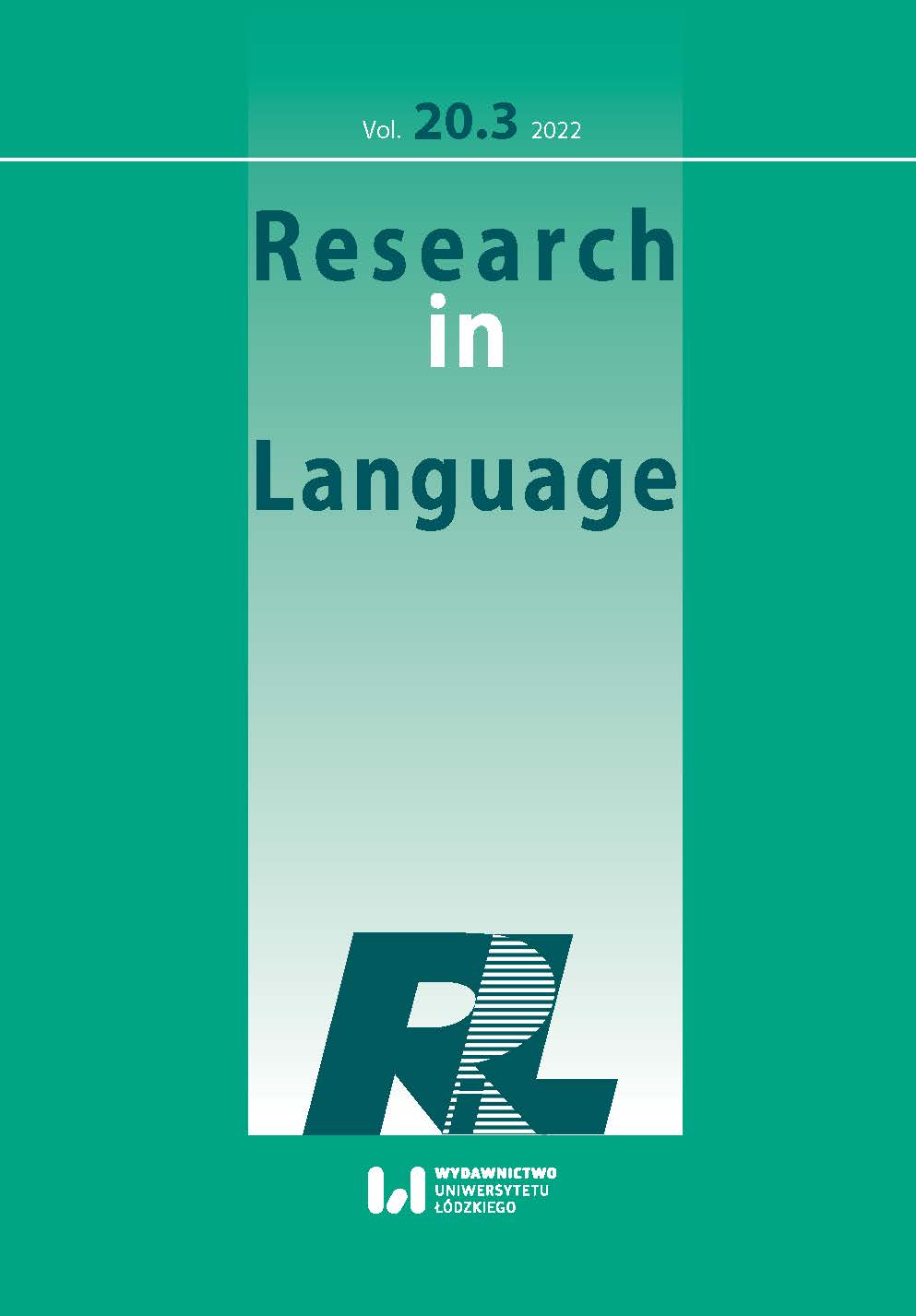
In the assessment of spoken production, numerous reasons can be identified behind the decisions that raters make in evaluating samples of oral performance. Inter and intra rater factors are relatively well documented in various reliability and validity studies. Some that have been identified in literature involve the effects of examinee pairing or the familiarity with the examinees, others point in the direction of gender and gender role perceptions O’Sullivan (2008), others appear to be connected with body language and non-verbal cues that accompany oral production (cf.: Krahmer and Swerts 2004, Seiter, Weger, Jensen and Kinzer 2010). While some studies that address the assessment of speaking English in exam contexts suggest that raters may not feel as comfortable assessing pronunciation as they do other aspects of a speaker’s performance (Orr 2002, Hubbard, Gilbert and Pidcock 2006, Brown 2006, De Velle 2008), more recent investigations of rater behaviour involving electronic evidence from training, maintenance and online examination programmes tentatively show that pronunciation, in fact, is the first category examiners attend to (Hubbard 2011, Chambers and Ingham 2011, Krakowian 2011, Seed 2012, Tynan 2015, Kang and Ginther 2019). This paper looks at large collection of assessments stored in an electronic system to investigate what raters really seem to pay attention to when allegedly following rating scales.
More...
Migration to a foreign country can be a complex process involving the adjustment to a new culture and the acquisition of a second language (L2). Acculturation, the process by which an individual integrates their native values and behaviours with those of the host culture, is an integral part of this process. It has been suggested that the choice of acculturation strategy can either facilitate or hinder L2 acquisition (Schumann, 1986; Berry, 1997). Pronunciation is a vital aspect of L2 proficiency and is often seen as mediating an individual's identity in the host culture (Piske et al., 2001). This study focuses on the pronunciation patterns of ten adult Polish immigrants living in Welshpool, Wales, and attempts to examine the potential relationship between a chosen acculturation strategy (adaptation or preservation) and the use of rhoticity in English. Rhoticity, a salient feature of British English pronunciation that varies in use and quality depending on the region (Wells, 1982), has been previously studied in relation to the use of rhoticity by Polish speakers (Jaworski, 2010; Jaworski & Gillian, 2011; Stolarski, 2013, 2015; Zając, 2016; Rojczyk & Zając, 2017; Matysiak, 2020), with a notable emphasis on the use of taps in intervocalic and post-vocalic positions. The present study found some inconsistencies in the use of rhoticity in English.
More...
The present article seeks to review the literature on the historical development of the Japanese accentual system. Whilst some merits of the alternative account of Ramsey and de Boer are recognized, the traditional model of Middle Japanese pitch-accent is defended, and a rebuttal of the arguments against it provided. The traditional model is integrated and corroborated by cross-linguistic and phonation-related arguments, with an eye towards philological evidence. It is concluded that, for the present at least, the evidence in favour of the traditional account of Middle Japanese tonogenesis is more robust and more persuasive.
More...
This paper discusses the assumptions of a Multi-Layer Transcription Model (hereinafter: MLTM). The solution presented is an advanced grapheme-to-phoneme (G2P) conversion method that can be implemented in technical applications, such as automatic speech recognition and synthesis systems. The features of MLTM also facilitate the application of text-to-transcription conversion in linguistic research. The model presented here is the basis for multi-step processing of the orthographic representation of words with those being transcribed gradually. The consecutive stages of the procedure include, among other things, identification of multi-character phonemes, voicing status change, and consonant clusters simplification. The multi-layer model described in this paper makes it possible to assign individual phonetic processes (for example assimilation), as well as other types of transformation, to particular layers. As a result, the set of rules becomes more transparent. Moreover, the rules related to any process can be modified independently of the rules connected with other forms of transformation, provided that the latter have been assigned to a different layer. These properties of the multi-layer transcription model in question provide crucial advantages for the solutions based on it, such as their flexibility and transparency. There are no assumptions in the model about the applicable number of layers, their functions, or the number of rules defined in each layer. A special mechanism used for the implementation of the MLTM concept enables projection of individual characters onto either a phonemic or a phonetic transcript (obtained after processing in the final layer of the MLTM-based system has been completed). The solution presented in this text has been implemented for the Polish language, however, it is not impossible to use the same model for other languages.
More...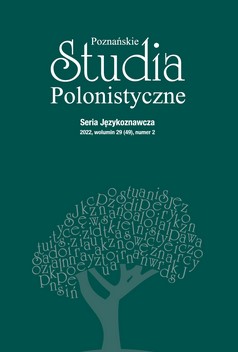
The subject of this article is the specificity of acquired apraxia of speech and the inclusion and exclusion criteria for diagnosing this type of disorder. The article draws attention to the distinction between apraxia of speech and aphasia or dysarthria with which it very often coexists. It describes the process of diagnosing it, which should include the assessment of the consistency of an utterance, its accuracy and fluency, and therefore the degree of adequacy of repeated statements, differentiation of errors (phonetic, phonological) that accompany it, and speech fluency. The article also discusses the tools for studying apraxia of speech currently existing worldwide, including hierarchical word lists and scales for its assessment.
More...